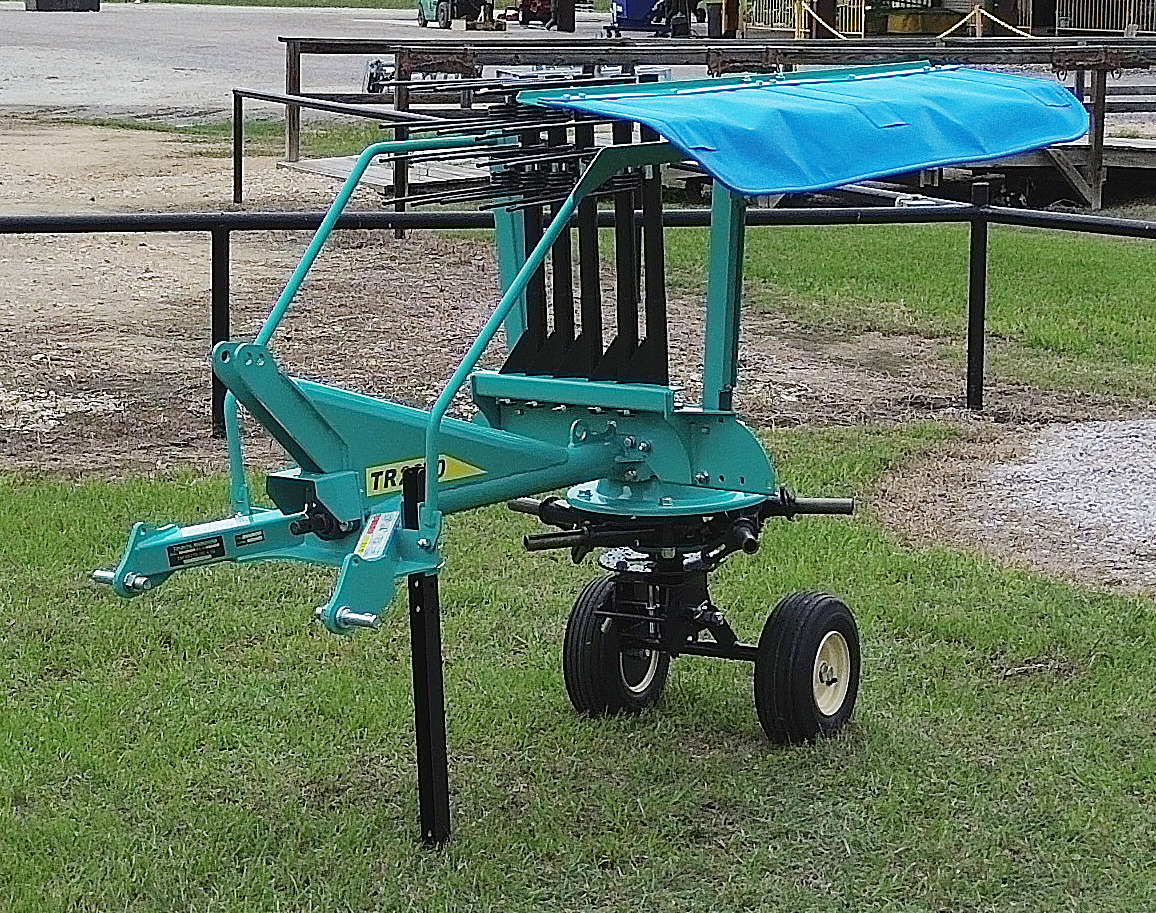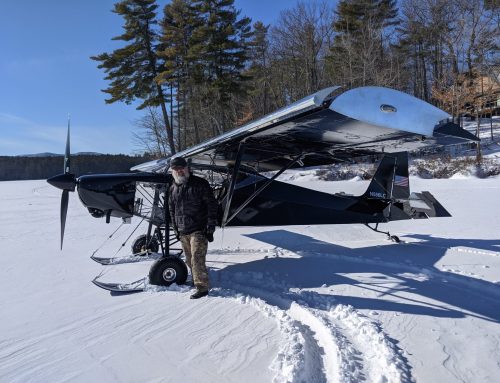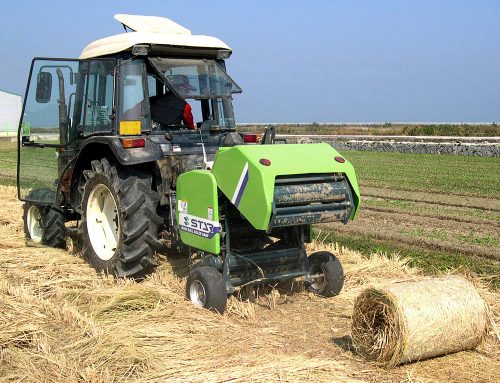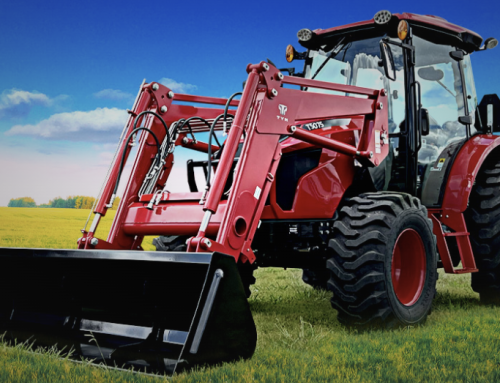Introduction: Why the Takakita Gyro Rake Matters
When it comes to haymaking, the difference between average and high-quality forage often comes down to the equipment you use. The Takakita Gyro Rake is designed to improve hay drying efficiency, reduce crop loss, and prepare uniform windrows for baling. Unlike conventional rakes that can damage leaves and mix dirt into forage, the Takakita’s rotary action gently lifts and spreads hay for clean, nutrient-rich feed.
At Small Farm Innovations, we provide solutions tailored for hay producers who value precision and efficiency. The Takakita Gyro Rake features several innovations that not only improve forage quality but also reduce time in the field. For small to mid-sized farms, pairing it with other hay equipment like the Takakita RB511 Mini Round Baler or the Takakita WM-511 Bale Wrapper creates a seamless workflow from cutting to storage.
This blog will provide a feature deep dive into the Takakita Gyro Rake, explore its setup process, highlight its benefits in forage drying, and share essential maintenance tips. Whether you’re looking to maximize efficiency in hay rakes, improve baler prep, or ensure consistent feed quality, this guide will help you understand why the Takakita is a smart investment for your operation.
Top Features of the Takakita Gyro Rake
The Takakita Gyro Rake is engineered to simplify hay operations while protecting crop nutrition. Its design ensures efficiency at every stage of the raking process. Some standout features include:
Gentle Rotary Raking System – Unlike drag rakes, the Takakita’s rotary system lifts hay cleanly off the ground, reducing dirt and leaf loss.
Adjustable Working Widths – Farmers can adapt windrow size to their baler, ensuring smooth operation with equipment like the Takakita RB511 Mini Round Baler.
Durable Tines – Designed to handle heavy forage loads, the flexible tines ensure consistent raking, even in damp conditions.
Quick Forage Drying – By turning and fluffing hay evenly, the rake speeds up drying and reduces the risk of spoilage.
Sturdy Build with Low Maintenance – Japanese craftsmanship ensures the rake can withstand years of use with minimal upkeep.
This flexibility makes it a versatile solution for farms of varying sizes. Other models, such as the IHI MGH-2520 Gyro Rake, provide additional options depending on acreage. Farmers can explore the full range on the gyro rakes category page.
By combining innovation with ease of use, the Takakita Gyro Rake is not just a tool it’s a productivity booster that helps farmers achieve cleaner, faster, and more consistent hay preparation.
Gyro Rake Setup for Maximum Efficiency
Proper setup ensures you get the best results from your Takakita Gyro Rake. Begin by parking the rake on level ground and adjusting the working width to fit your baler’s windrow capacity.
Key setup steps include:
Adjust rake arms to achieve even hay flow.
Set tine height so they just skim the ground, avoiding soil contamination.
Check PTO speed for smooth operation without straining the tractor.
Confirm alignment of frame and wheels for stability.
Correct setup not only improves forage handling but also reduces unnecessary wear on the rake. Once aligned, the rake prepares windrows that are perfectly suited for balers and wrappers like the Takakita WM-511 Bale Wrapper.
For farmers managing larger fields or varied forage conditions, checking out alternative gyro rake models on Small Farm Innovations ensures you always have the right match for your operation.
How the Takakita Gyro Rake Improves Forage Drying
Forage quality depends on proper drying. Wet or poorly cured hay can spoil quickly, leading to feed waste and nutritional losses. The Takakita Gyro Rake features are specifically designed to promote faster, more uniform drying.
Here’s how it works:
The rotary system fluffs and aerates hay, allowing sunlight and airflow to reach every layer.
Adjustable tine settings ensure hay is turned evenly, minimizing clumps that trap moisture.
By creating uniform windrows, it helps speed up the curing process and makes baling more efficient.
Farmers who pair the rake with a baler like the Takakita RB511 Mini Round Baler notice a significant reduction in baling time since hay is already prepared in ideal condition. Wrapping bales with the Takakita WM-511 Bale Wrapper then locks in quality and preserves nutrition for livestock.
Compared to traditional hay rakes, the Takakita’s design ensures that leaf retention is higher, which is crucial for crops like alfalfa. This not only increases feed value but also reduces waste, saving time and money.
By integrating a Takakita Gyro Rake into your hay system, you gain both efficiency and quality assurance, making it one of the most reliable tools for forage drying operations.
Pairing the Gyro Rake with Balers and Wrappers
The Takakita Gyro Rake is at its best when integrated into a complete hay system. By working in sync with balers and wrappers, farmers can streamline their haymaking process.
With Balers – When paired with the Takakita RB511 Mini Round Baler, the rake ensures windrows are the right size and density for smooth, jam-free baling. The result is tightly packed, uniform bales that are easy to handle and store.
With Wrappers – Once baled, the hay can be immediately wrapped using the Takakita WM-511 Bale Wrapper. The clean, consistent windrows produced by the gyro rake make wrapping faster and reduce the risk of air pockets that can cause spoilage.
Across Multiple Models – Whether using the Takakita Gyro Rake or alternatives like the IHI MGH-2520 Gyro Rake, the pairing flexibility ensures farmers always have a reliable setup.
This system-based approach helps farmers maximize their harvest while minimizing losses. At Small Farm Innovations, we recommend considering your entire forage operation cutting, raking, baling, and wrapping when selecting equipment. By choosing compatible machinery, you create a seamless flow from field to storage, ensuring both efficiency and quality preservation.
Maintenance Tips for Long-Lasting Performance
To keep your Takakita Gyro Rake performing at its best, routine maintenance is essential. The good news is that these machines are designed for durability and require minimal upkeep.
Key tips include:
Lubricate all moving parts regularly to reduce friction.
Inspect tine arms for bends or wear and replace when needed.
Tighten bolts and fasteners after extended use.
Clean off debris after each session to prevent buildup.
Check PTO shaft for proper alignment and function.
Consistent care not only extends equipment life but also ensures consistent hay quality. Farmers often find that with proper maintenance, the rake remains reliable season after season.
When looking for additional equipment or support, visit the Takakita Gyro Rake product page or connect with the team through the Contact Us page.
Why Choose Small Farm Innovations for Your Hay Equipment
At the end of the day, equipment is only as valuable as the support behind it. That’s where Small Farm Innovations makes the difference. We don’t just sell hay tools we provide farmers with long-term solutions that improve efficiency and productivity.
Reasons to choose us include:
Specialized Product Line – From gyro rakes to balers and wrappers, every piece of equipment is selected for quality and performance.
Expert Guidance – Our team helps farmers match the right rake or baler to their acreage and forage needs.
Dependable Support – Whether you need spare parts, setup assistance, or usage tips, our experts are ready to help.
Proven Quality – Takakita equipment is recognized worldwide for durability, and we ensure it’s available for U.S. farms of all sizes.
For farmers who want to increase efficiency, reduce waste, and preserve forage nutrition, the Takakita line offers unmatched value. Explore our product catalog today or reach out via the Contact Us page to learn how we can support your haymaking operation.





